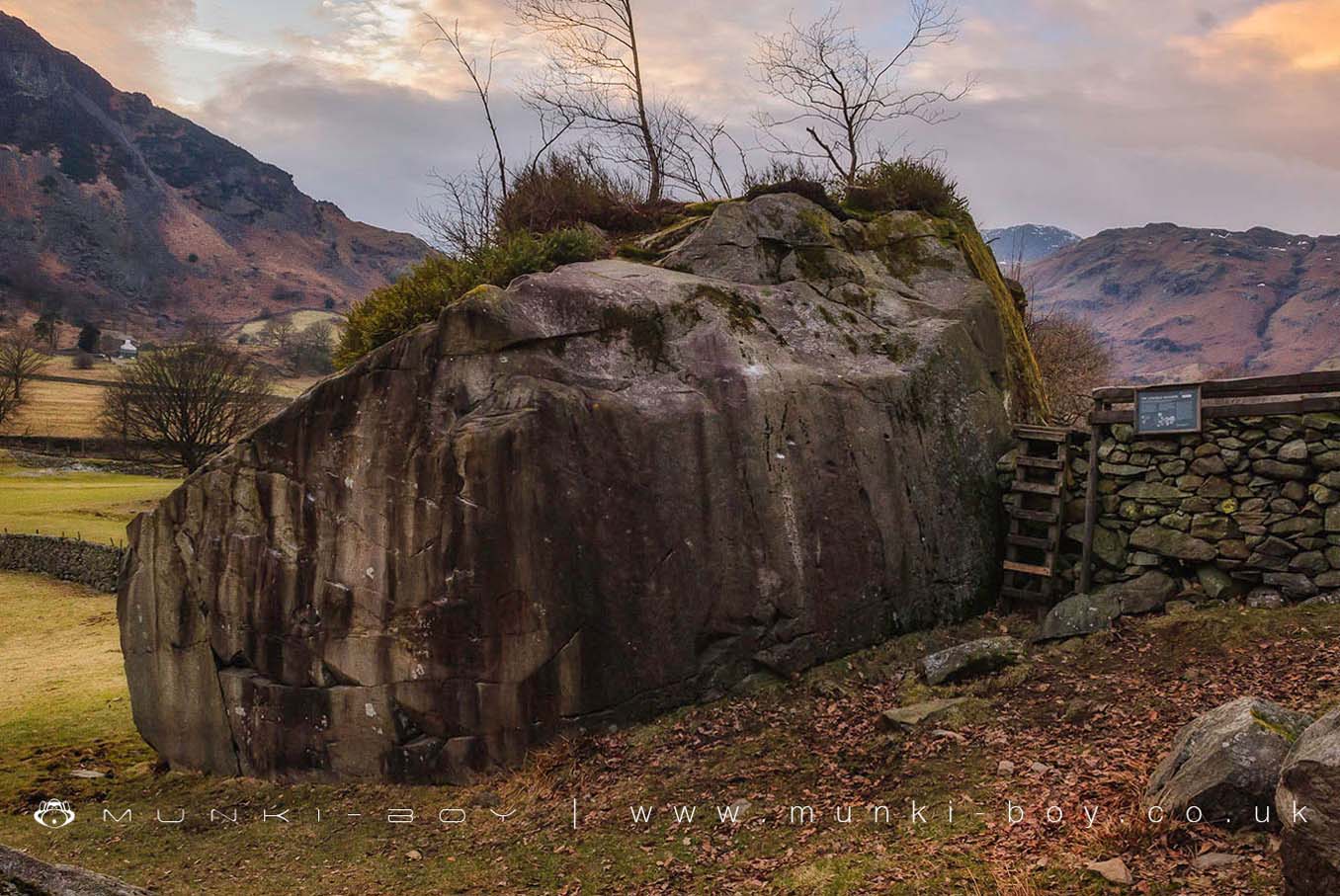
Copt Howe Boulders by munki-boy
Copt Howe Ancient Carvings
Copt Howe Ancient Carvings is in The Lake District National Park in England.
Copt Howe Ancient Carvings include what are known in rock climbing circles as The Langdale Boulders, two prehistoric rock art sites in Great Langdale, 250m south of Harry Place. It consists of two very large boulders of Andesitic tuff a few metres apart upon which a series of prehistoric rock carvings have been made. The boulders were in their present position when carved upon. The western of the two boulders, Boulder A, contains the most extensive carvings of the two rocks. These are found on the vertical east face of the rock and include a central unmarked boss' and multiple concentric circles, one having up to eleven rings. A linear feature in the shape of a chevron appears to be linked to the unmarkedboss’ by triple grooves which appear to have been carved upwards. Many other unusual motifs are present on the rock face. Other features include numerous cup' marks - ie small circular hollows in the rock. Whilst some of thesecup’ marks are undoubtably man made and are surrounded by rings, others appear to have been formed by the natural erosion of mineral deposits within the rock. However, many of these natural ‘cups’ have been utilised to form part of the overall pattern and design of the rock carving. The linear and `boss’ carvings on Boulder A have comparisons with carvings elsewhere, notably one found at The Glassonby cairn circle in eastern Cumbria, and Temple Wood in Argyll. The eastern boulder, Boulder B, has been partially quarried and appears to have only one carving of two uncompleted rings, together with many natural ‘cups’ on the vertical southern face. A drystone wall and wooden stile are excluded from the scheduling, although the ground beneath these features is included. Despite partial quarrying of one of the boulders, The Langdale Boulders prehistoric rock art sites survive well. Boulder A in particular displays a wide assortment of differing motifs including a concentric circle of 11 rings, the largest number of concentric rings known from a prehistoric rock carving site in Britain. Together with Boulder B the monument will contribute greatly to further study and understanding of prehistric rock art sites in the region.
Created: 27 November 2016 Edited: 29 November 2023


Copt Howe Ancient Carvings
Copt Howe Ancient Carvings LiDAR Map
Contains public sector information licensed under the Open Government Licence v3.0
Local History around Copt Howe Ancient Carvings
There are some historic monuments around including:
Seven Intakes medieval dispersed settlement 210m south west of Fell FootTwo rifle ranges on Silver HowMoot mound at Fell Foot Farm, Little LangdaleCastle Howe hillfort, Little LangdaleRound cairn on Dunmail RaiseLong Intakes medieval dispersed settlement and associated kiln 370m south of Fell FootGreenburn copper mines and associated ore processing worksConiston copper minesRoman road up Wrynose PassThe Langdale Boulders, two prehistoric rock art sites in Great Langdale 250m south of Harry PlaceLead mine and ore works at Greenhead Gill, GrasmereRifle Range target and Marker's Hut, 150m north west of Blea MossMickleden Beck prehistoric cairnfield and field system, funerary cairn and a medieval dispersed settlement centred 840m south west of Pike of StickleRoman road in Wrynose BottomYewdale lime kiln 380m south west of Low YewdaleRound cairn, 460m south west of Thompson Ground.






